As you've seen, when we change the width of a label UIKit re-calculates the word wrapping immediately.
When we do something like this:
UIView.animate(withDuration: 2, delay: 0, options: .curveEaseInOut) {
self.container.frame = CGRect(x: 0, y: 0, width: 200, height: 200)
self.container.center = self.view.center
self.container.layoutIfNeeded()
}
UIKit sets the width and then animates it. So, as soon as the animation starts, the word wrapping gets set to the "destination" width.
One way to animate the word wrap changes would be to create an animation loop, using small point-size changes.
That works-ish, with two problems:
- Using a
UILabel, we get vertical shifting (because the text is vertically centered in a label), and
- If we make the incremental size changes small, it's smooth but slow. If we make the incremental changes large, it's quick but "jerky."
To solve the first problem, we can use a UITextView, subclassed to work like a top-aligned UILabel. Here's an example:
class MyTextViewLabel: UITextView {
override init(frame: CGRect, textContainer: NSTextContainer?) {
super.init(frame: frame, textContainer: textContainer)
commonInit()
}
required init?(coder aDecoder: NSCoder) {
super.init(coder: aDecoder)
commonInit()
}
private func commonInit() -> Void {
isScrollEnabled = false
isEditable = false
isSelectable = false
textContainerInset = UIEdgeInsets.zero
textContainer.lineFragmentPadding = 0
}
}
Not much we can do about the second problem, other than experiment with the width-increment value.
Here's a complete example to look at and play with (using the above MyTextViewLabel class). Note that I'm also using auto-layout / constraints instead of explicit frames:
class MyContainerView: UIView {
let label: MyTextViewLabel = {
let label = MyTextViewLabel()
label.text = "Let's use some readable text for this example. It will make the wrapping changes look more natural than using a bunch of repeating three-character \"words.\""
// let's set the font to the default UILabel font
label.font = .systemFont(ofSize: 17.0)
return label
}()
override init(frame: CGRect) {
super.init(frame: frame)
commonInit()
}
required init?(coder: NSCoder) {
super.init(coder: coder)
commonInit()
}
private func commonInit() {
clipsToBounds = true
backgroundColor = .purple
addSubview(label)
label.translatesAutoresizingMaskIntoConstraints = false
NSLayoutConstraint.activate([
// let's inset the "label" by 4-points so we can see the purple view frame
label.topAnchor.constraint(equalTo: topAnchor, constant: 4.0),
label.leadingAnchor.constraint(equalTo: leadingAnchor, constant: 4.0),
label.trailingAnchor.constraint(equalTo: trailingAnchor, constant: -4.0),
// if we want the bottom text to be "clipped"
// don't set the bottom anchor
//label.bottomAnchor.constraint(equalTo: bottomAnchor, constant: -4.0),
])
label.backgroundColor = .yellow
}
}
class LabelWrapAnimVC: UIViewController {
// for this example
let startWidth: CGFloat = 150.0
let targetWidth: CGFloat = 200.0
// number of points to increment in each loop
// play with this value...
// 1-point produces a very smooth result, but the total animation time will be slow
// 5-points seems "reasonable" (looks smoother on device than on simulator)
let loopIncrement: CGFloat = 5.0
// total amount of time for the animation
let loopTotalDuration: TimeInterval = 2.0
// each loop anim duration - will be calculated
var loopDuration: TimeInterval = 0
let container: MyContainerView = MyContainerView()
var cWidth: NSLayoutConstraint!
override func viewDidLoad() {
super.viewDidLoad()
view.addSubview(container)
container.translatesAutoresizingMaskIntoConstraints = false
let g = view.safeAreaLayoutGuide
cWidth = container.widthAnchor.constraint(equalToConstant: startWidth)
NSLayoutConstraint.activate([
container.centerXAnchor.constraint(equalTo: g.centerXAnchor),
container.centerYAnchor.constraint(equalTo: g.centerYAnchor),
container.heightAnchor.constraint(equalTo: container.widthAnchor),
cWidth,
])
}
override func viewDidAppear(_ animated: Bool) {
super.viewDidAppear(animated)
doAnim()
}
func animLoop() {
cWidth.constant += loopIncrement
// in case we go over the target width
cWidth.constant = min(cWidth.constant, targetWidth)
UIView.animate(withDuration: loopDuration, animations: {
self.view.layoutIfNeeded()
}, completion: { _ in
if self.cWidth.constant < self.targetWidth {
self.animLoop()
} else {
// maybe do something when animation is done
}
})
}
func doAnim() {
// reset width to original
cWidth.constant = startWidth
// calculate loop duration based on size difference
let numPoints: CGFloat = targetWidth - startWidth
let numLoops: CGFloat = numPoints / loopIncrement
loopDuration = loopTotalDuration / numLoops
DispatchQueue.main.async {
self.animLoop()
}
}
override func touchesBegan(_ touches: Set<UITouch>, with event: UIEvent?) {
doAnim()
}
}
I don't know if this will be suitable for your target usage, but it's at least worth a look.
